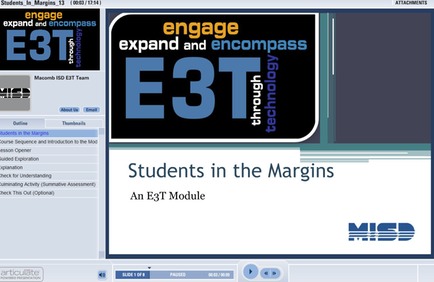Today's classrooms are filled with diverse learners. Students with varying interests, perception, learning strengths, language ability, and motivation are a part of every teacher's classroom.
Given this diversity, several questions come to mind?
- How can we recognize and plan for diversity in our classrooms?
- How can we effectively deliver instruction to this diverse groups of students from a variety of cultures with varying languages, learning styles, abilities and disabilities?
Good instructional planning begins with the recognition that each learner is unique.
With student diversity in mind, educators can design instruction that anticipates the need for a variety of options and supports. From the start, providing options for student's interests, perception, learning strengths, language ability, and motivation must be built into the lesson. Students then can select the options they need, to receive instruction truly customized by the individual learner.
“..the more differentiated use of media for instruction reveals that individuals who are defined as “learning disabled” within print-based learning environments are not the same individuals who are defined as “learning disabled” within video- or audio-based learning environments. Such revelations splinter the old categorical divisions between “disability” and “ability” and create new descriptors that explicitly recognize the interaction between student and environment in the definition of strengths.”
Rose and Meyer, The Future is in the Margins (2005)
Resources:
LD Online: seeks to help children and adults reach their full potential by providing accurate and up-to-date information and advice about learning disabilities and ADHD. The site features articles, multimedia, monthly columns by noted experts, first person essays, children’s writing and artwork, and a comprehensive resource guide.
Students in the Margins Module
